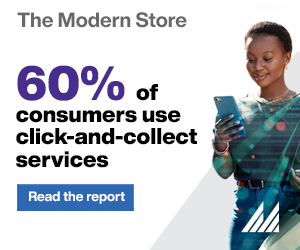From excess to success: how AI matches buyers to stranded stock
Retailers and suppliers are sitting on billions in unsold inventory, while small resellers scramble for supply, says Alon Shrier of bazarr.ai. In late 2025, a new class of AI commerce agents is quietly turning that friction into opportunity.
Across the global retail sector, analysts estimate that more than $1.9 trillion in goods remain unsold each year. In fashion and consumer electronics, the typical sell-through rate has fallen below 70%, forcing brands to discount earlier and deeper just to clear space.
Every week that inventory sits idle, it ties up working capital, storage costs, and carbon footprint.
Yet traditional liquidation channels move too slowly to keep pace with modern retail cycles. Bulk buyers still rely on manual negotiation, email spreadsheets, or brokers who take days to confirm a deal.
By the time inventory changes hands, value has already leaked.
Why existing discovery tools don't solve it
Search engines and marketplaces help consumers find products, not businesses find each other. Wholesale discovery remains fragmented across supplier directories, trade shows, and closed business-to-business (B2B) networks. Even when digital, these systems aren't data-driven.
A supplier listing '500 units of smartwatches' doesn't automatically match a reseller searching for 'men's electronics bundles under $50 landed cost.' These inefficiencies make it difficult for small retailers to buy at scale and for suppliers to move slow-moving stockkeeping units (SKUs) before they lose their seasonality.
The turning point: data liquidity meets AI reasoning
What's changing in 2025 is the infrastructure underneath retail. Catalogue data is more structured. Retail media networks have matured. Application programming interfaces (APIs) now expose live pricing, availability, and compliance data.
This sets the stage for a new layer of automation: artificial intelligence (AI) commerce agents. These systems identify mutual interest, establish fair pricing bands, and facilitate bulk deals across multiple parties in real-time. Instead of waiting for a buyer and seller to find each other, the agent finds both.
How AI commerce agents work
At their core, commerce agents are matching systems trained on product, pricing, and behavioural data. They examine what retailers want to buy and what suppliers need to sell, then propose actionable trade bundles. The process unfolds in three steps:
- Ingest and normalise product data, including SKU attributes, pack sizes, costs, and locations.
- Score and match demand to supply based on overlap, timing, and margin thresholds.
- Generate trade proposals with recommended quantities and prices for each side.
Once verified, both parties can confirm digitally--often within minutes.
The goal isn't to replace procurement teams, but to augment them with 24/7 liquidity discovery.
Where value shows up
- For suppliers: faster liquidation and higher recovery rates compared to auction or off-price channels.
- For retailers: access to curated wholesale deals without protracted negotiations.
- For brands: cleaner downstream control - less grey-market leakage and improved price integrity.
Documented case studies report recovery improvements of ~40% and turnaround reductions from ~30 days to 2 days, depending on category and channel.
Common pitfalls to avoid
AI matching only works as well as the data that feeds it. Typical roadblocks include:
- Inconsistent product identifiers across catalogues.
- Opaque minimum order rules or undisclosed price floors.
- Limited trust in automated recommendations.
Fixing these starts with transparent data governance. Standardise SKU fields, make pricing parameters explicit, and track all transactions for audit. Transparency builds the confidence that automation relies on.
How to start in 30 days
The simplest way to explore commerce agents is to run a short pilot.
- Start by exporting a small sample of slow-moving SKUs - include cost, quantity, and location.
- Feed that data into an AI system that can interpret it and match it with verified retail demand.
- Next, set your guardrails: minimum sell price, preferred buyer type, and turnaround window.
Within days, you'll start seeing automated trade proposals that strike a balance between recovery and speed. Each accepted match teaches the system what works best for your catalogue and market conditions.
You don't need to build this from scratch: several providers now offer ready-to-use commerce agent infrastructure.
One of the first live deployments is already operating at bazarr.ai, where suppliers and resellers are automatically matched to form verified wholesale deals in minutes, rather than months.
From cost centre to opportunity engine
The same technologies transforming consumer search are now quietly rebuilding the wholesale backbone of retail. When inventory becomes data-visible and AI can reason across it, excess stops being waste; it becomes working capital waiting to be utilised.
Retailers, suppliers, and marketplaces that adopt AI-driven commerce agents early will own the new liquidity layer of retail. Those who don't may keep watching their stock sit, while others turn it into access.
About the author
Alon Shrier is the CEO and Co-Founder of bazarr.ai, an AI-wholesale agent that automates B2B buying and liquidation by matching retailers and suppliers in the US.
With over two decades of experience in retail and technology, he has helped brands and marketplaces modernise procurement and turn excess inventory into opportunities.





